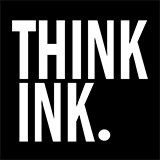3 Ways NOT to Write About Your Award-Winning B2B Technology Company
Nov 01, 2019 / By Stewart Thompson
Every B2B technology company is eager to write about their latest achievements, but how do you know you’re really engaging your audience and not turning them off with another generic press release? Sometimes it can be hard to tell, whether you’re the owner of a startup writing the copy yourself or a marketing manager supervising an entire marketing department.
To help you quickly identify which, here are three ways NOT to write about your travel technology company.
#1. USING JARGON
Your readers are like anyone else; they don’t have much time to spend reading. When they glance at your content, they’ll immediately want to know what’s in it for them. In fact, the average person’s attention span (only 8 seconds) is now shorter than that of a goldfish.
Would you lecture to a tank full of goldfish? Then don’t lecture your readers!
Jargon may sound smart but by its very nature it excludes many more people than it includes. As a general rule if your business model can’t be explained simply, your messaging needs a major rework.
Try parsing this bit of tech-speak:
“The first platform of its kind to enable business and IT to easily collaborate, (Company) removes silos between business units. Built for scalability, reliability, and security, (Company) has been proven many times over to be enterprise-grade and robust. It has the most powerful, most advanced integrations framework on the market that supports a wide array of formats and channels.”
So…what do they sell? Beats us.
Why would a business want to commit the writing equivalent of shouting down an empty hallway? Instead expand your marketing reach by using clear, plain language everyone can understand. Here’s a clearer example:
“Tear down the silos dividing your business using our innovative collaboration platform. Supporting a robust communications suite, our enterprise-grade solution is scalable and secure, increasing your worker productivity and driving your revenue.”
#2. WRITING ABOUT YOUR BUSINESS INSTEAD OF HOW YOU'RE HELPING CUSTOMERS
At first this might seem counterintuitive—aren’t they both the same thing?
Absolutely not!
Challenge yourself to make it to the end of this next paragraph:
“(Company), the enterprise digital platform, today announced $XX million in Series A funding led by _____ Partners with participation from existing backers ____Capital and ___Ventures. (Managing Director) will join our Board of Managers. The capital will be used to deliver our cutting-edge technology to a wider market share, as well as to build out the partner ecosystem and the larger customer community.”
It’s easy to recognize someone else’s bad copy, but harder to tell when your own messaging is this tone-deaf. Instead of writing the typical placeholder press release, technology companies should avoid talking about themselves and instead focus on all the ways you’re helping your customers. Write about how your tech company is solving their problems, growing their business or just making their lives easier.
#3. LISTING OFF DETAILS INSTEAD OF TELLING A STORY
Research by UC Berkeley confirms that stories engage a greater part of our brains and are better retained in our memories than simple lists of facts.
That’s a significant finding, especially for businesses looking to raise awareness of their services and accomplishments.
A thousand details don’t tell a story: people do. Who is your audience, and what challenges do they face every day? Who are their customers, and what are their struggles? Relatable conflicts like these together form a compelling story about the value your business brings to its customers.
Without a human touch, marketing copy is completely inert:
“Experiencing unprecedented growth, (Company’s) award-winning technology now enables brands around the world to fulfill billions of experiences across many different industries, including fintech, retail, manufacturing, travel, and technology.”
Now contrast that lump of dry detail against a coherent brand story, this one from Beekeeper:
How It All Started
“Beekeeper was founded in 2012 by Cristian Grossmann (PhD in Engineering) and Flavio Pfaffhauser (MSc in Computer Science), two friends with one big idea. They were both passionate about connecting people through technology, so they created Spocal, a student social network. Users found the platform so intuitive and engaging, they started using it for everyday communication. Companies started contacting them with requests to use the platform for their business to adapt it to their needs and improve business processes. They quickly realized just how many businesses struggled due to a lack of high-quality, engaging tools for internal communication and knew they could fill that need with intuitive mobile technology.”
Not only do you know where Beekeeper began, but most importantly, you know where they’re going.
WRITE RELEVANT CONTENT TO ACHIEVE BUSINESS BENEFITS
So how can you reorient your messaging to make sure you’re reaching your target audience?
For starters, always be sure to lead with the benefits for your readers. Keep your messaging relatable and readable by making every point as clearly as possible, with no jargon or insider language. Craft a personal story that speaks to your audience by relating to their problems and day-to-day jobs.
We see far too many technology companies struggling to stay on-point with their messaging and value proposition. It’s also why B2B technology companies, whether they’re startups, scale-ups or companies that have been around for over 15 years, will come to us for messaging help. Delivering precision messaging targeted directly to their buying audiences, regardless of which industry they’re in, enhances the effectiveness of their marketing efforts while ensuring their products and news are top-of-mind for their top prospects instead of turning them off.
Want to STAY AHEAD OF B2B MARKETING TIPS? Sign up for our newsletter.
Sign up for our insights on the convergence of business and PR





